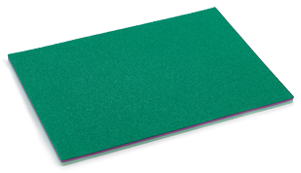Nov . 12, 2024 19:42 Back to list
sports surfacing
The Importance of Sports Surfacing in Enhancing Athletic Performance
Sports surfacing plays a crucial role in the overall functionality and safety of athletic facilities. From running tracks to basketball courts, the type of surface chosen can significantly impact athletes' performance, injury prevention, and the longevity of the facility itself. This article delves into the various types of sports surfacing, their benefits, and how they can be optimized to enhance athletic experiences.
Types of Sports Surface
Sports surfaces can be categorized into several types based on the materials used and the sports they cater to. Common types include
1. Natural Grass Often used in soccer, football, and rugby, natural grass provides a traditional yet variable playing experience. Its benefits include aesthetic appeal, environmental advantages, and potential cooling effects in sunlight. However, maintenance costs, susceptibility to weather, and wear and tear can be concerns.
2. Artificial Turf A popular alternative to natural grass, artificial turf offers consistency in playing conditions, reduces maintenance requirements, and is more durable in various weather conditions. It's prevalent in soccer, field hockey, and even American football. However, there are considerations regarding player comfort, potential injury rates, and heat retention during hot weather.
3. Rubber and Synthetic Surfaces These surfaces are commonly seen in running tracks and multi-sport courts. Rubber surfaces, often made from recycled tires, provide excellent shock absorption, reducing the risk of impact-related injuries. Synthetic surfaces can vary in firmness and offer a wide range of applications, making them versatile for various sports including basketball, tennis, and volleyball.
4. Wooden Surfaces Typically used in indoor sports such as basketball, badminton, and volleyball, wooden surfaces deliver a classic feel while offering great ball response and player traction. Maintaining wooden floors requires regular upkeep and refinishing to preserve performance and aesthetic quality.
Benefits of Quality Sports Surfacing
sports surfacing

1. Enhanced Performance Proper surfacing can lead to significant improvements in athletic performance. Surfaces designed for specific sports optimize grip, rebound, and speed. For instance, a well-maintained running track can facilitate faster times due to its engineered design, while a high-quality basketball court ensures optimal ball bounce and traction.
2. Injury Prevention One of the most critical aspects of sports surfacing is its role in mitigating injuries. Surfaces that provide adequate cushioning can absorb impact, reducing the strain on athletes’ joints and muscles. For example, in sports like football and rugby, well-designed turf can decrease the likelihood of ankle sprains and other impact-related injuries.
3. Versatility Modern sports surfaces are often designed to accommodate multiple sports, making them an economical choice for schools and recreational facilities. This versatility allows facilities to maximize use and cater to various athletic needs, promoting physical activity across different demographics.
4. Safety and Compliance Many jurisdictions require that sports surfaces meet specific safety standards. High-quality surfacing materials are designed to adhere to these regulations, ensuring the safety of athletes. For example, surfaces that minimize slippage can significantly reduce the risk of falls and injuries during play.
Considerations for Installation and Maintenance
When choosing sports surfacing, several factors warrant consideration. First and foremost is the type of sport being played. Understanding the specific requirements for performance, safety, and player comfort is essential. Additionally, environmental factors like climate and weather patterns can influence the choice of materials.
Maintenance plays a crucial role in prolonging the life of sports surfaces. Regular checks, repairs, and cleanings can prevent deterioration and ensure optimal performance. Facilities should have clear maintenance schedules that account for wear and tear, seasonal changes, and usage patterns.
Conclusion
Investing in quality sports surfacing is crucial for any athletic facility aiming to promote peak performance and safety. Understanding the types of surfaces available and their respective benefits can guide organizations in making informed decisions. By prioritizing appropriate surfacing and investing in regular maintenance, facilities not only protect their athletes but also foster a culture of health, fitness, and community engagement. Overall, the right sports surfacing can make a significant difference in the world of athletics, providing a safe and optimal environment for athletes to excel.
-
Sport Court Tiles with AI Innovation | Durable & Safe
NewsAug.01,2025
-
Vinyl Carpet Flooring | Durable & Waterproof Design
NewsJul.31,2025
-
Premium Basketball Board Stand with GPT-4-Turbo AI
NewsJul.31,2025
-
Premium Maple Flooring for Gyms & Homes | PVC & Vinyl Options
NewsJul.30,2025
-
Premium Outdoor Basketball Court Tiles for All Weather Use
NewsJul.30,2025
-
Durable Basketball Board Stand for Indoor & Outdoor Use
NewsJul.29,2025

